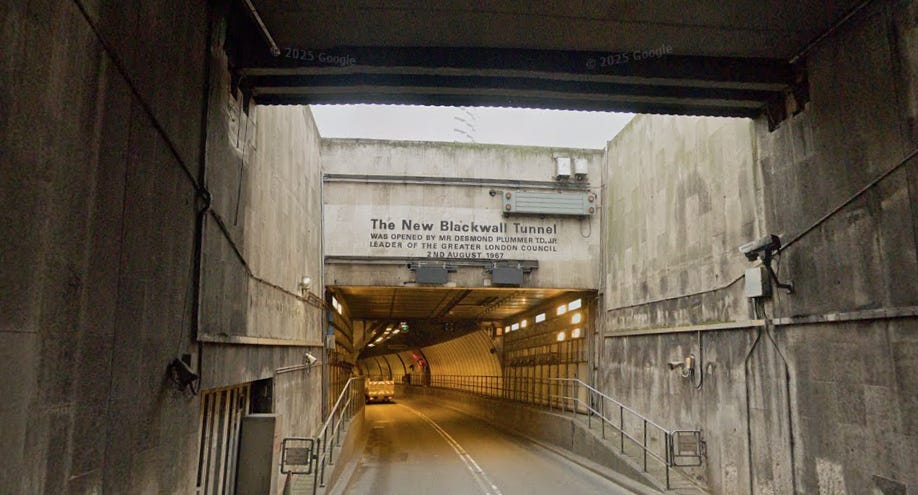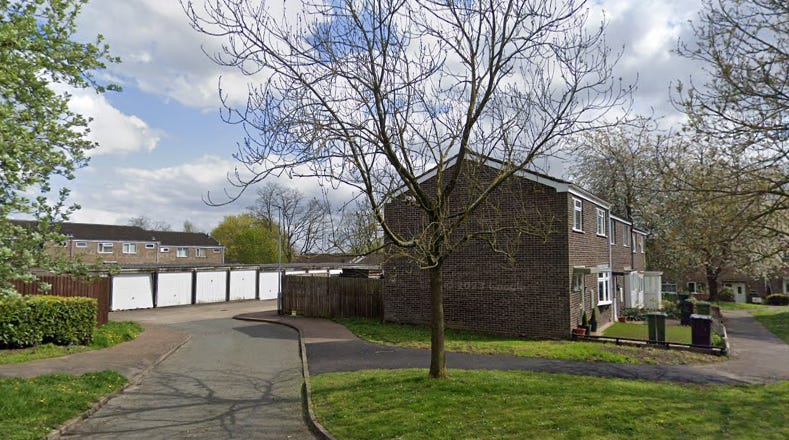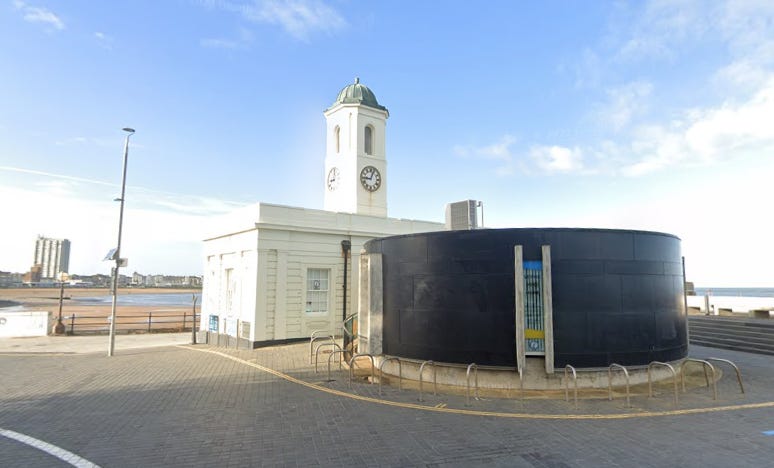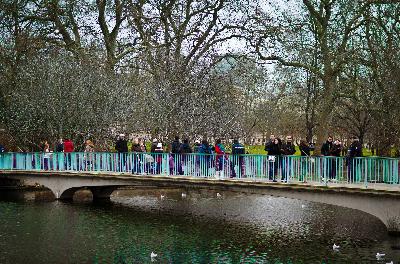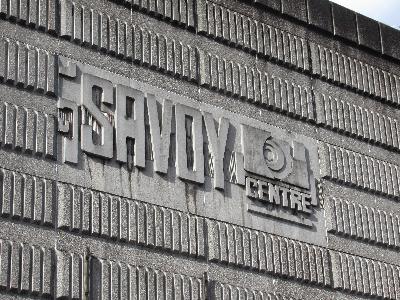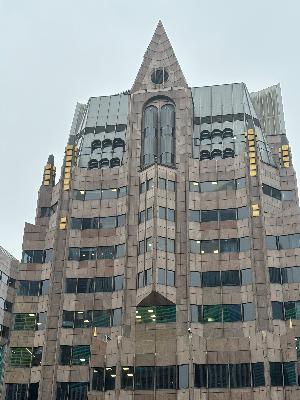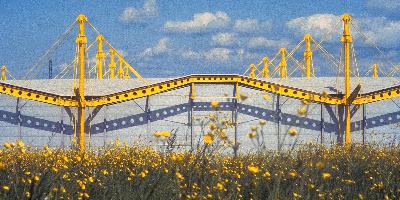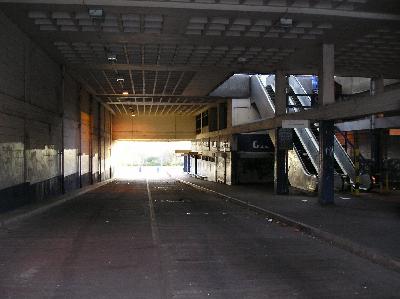Discover Monstrosities Mon Amour
Monstrosities Mon Amour

Monstrosities Mon Amour
Author: John Grindrod
Subscribed: 10Played: 121Subscribe
Share
© John Grindrod
Description
In Monstrosities Mon Amour we celebrate places and things that have been unfairly monstered. Host John Grindrod is your excitable guide to a world beyond the lazy stereotypes of crap towns and guilty pleasures. He meets people who share their enthusiasm for monsters major and minor, places that get a bad press and cultural artefacts that need to be rescued from the bin.
‘Warmly, welcomingly geeky.’ Jude Rogers, Observer
‘What a breath of fresh air … a genuine celebration of places and culture it’s all too easy to dismiss.’ Radio Times
Theme tune by Lorna Rees and Rufus Rees Coshan. Logo by Richard de Pesando.
You can support the podcast by subscribing through Substack or https://ko-fi.com/grindrod.
Thank you for listening.
johngrindrod.substack.com
‘Warmly, welcomingly geeky.’ Jude Rogers, Observer
‘What a breath of fresh air … a genuine celebration of places and culture it’s all too easy to dismiss.’ Radio Times
Theme tune by Lorna Rees and Rufus Rees Coshan. Logo by Richard de Pesando.
You can support the podcast by subscribing through Substack or https://ko-fi.com/grindrod.
Thank you for listening.
johngrindrod.substack.com
12 Episodes
Reverse
Get ready for an underwater adventure as we go beneath the Thames with curator and architectural historian Dr Rosamund Lily West.Have you ever been told you’ve got a mouth as big as the Blackwall Tunnel? Or been stuck in a conversation about the traffic? Or worse still, been actually stuck in the traffic there? It’s easy to overlook what an engineering marvel the Blackwall Tunnel is, the first tunnel built in the late Victorian era, and a second opened in 1967 as part of a second age of engineering ingenuity. But why does art and architectural historian (and local) Dr Rosamund Lily West like it? And what secrets does this great unsung piece of London’s infrastructure hold for the curious Monstrosities Mon Amour listener?After a joy ride through the tunnel Rosamund takes us for a booze-up at Wetherspoons, the pub chain people love to hate, where we marvel at their incredible historic buildings, gasp at their local interpretation boards, and polish off our microwaved curries. Dr Rosamund Lily West is a brilliant architectural historian and academic. You can find out more about her work, her publications and her walking tours on Instagram https://www.instagram.com/rosamundlilywest/ and Bluesky @rosamundlilywest.bsky.social and at her profile on British Art Network https://britishartnetwork.org.uk/membership/members/rosamund-lily-west/ Monstrosities Mon Amour is a reader-supported podcast. To receive new episodes and support my work, consider becoming a free or paid subscriber.Theme tune by Lorna Rees and Rufus Rees Coshan. Logo by Richard de Pesando. You can support Monstrosities Mon Amour by subscribing through Substack or through Ko-fi at https://ko-fi.com/grindrod Get full access to Grindrodia at johngrindrod.substack.com/subscribe
Let’s visit an ancient Norfolk town, and instead focus on its postwar estates with one of Britain’s best loved housing historians, John Boughton of Municipal Dreams.Thetford gets a bad rap. It isn’t particularly well known outside of Norfolk, and in many ways feels like a lot of towns expanded in the 1960s and 70s. With a variety of housing estates demonstrating the fashions and philosophies of the day, Thetford is a town of great history, from Roman to medieval and Georgian, and also of modernity. Discover where Dad’s Army’s Warmington on Sea was filmed, where Conran’s modern furnishings were made, and where a young municipal dreamer’s fascination with postwar housing was first kindled.And let’s also find out just why he’s so obsessed with white bread – not the plastic ready-sliced sort, and certainly not sourdough…John Boughton’s book Municipal Dreams grew from his amazing Wordpress and Substack sites: https://municipaldreams.wordpress.com and https://substack.com/@municipaldreamsMonstrosities Mon Amour is a listener-supported podcast. To receive new posts and support my work, consider becoming a free or paid subscriber.Theme tune by Lorna Rees and Rufus Rees Coshan. Logo by Richard de Pesando. You can support Monstrosities Mon Amour by subscribing through Substack or through Ko-fi at https://ko-fi.com/grindrod Get full access to Grindrodia at johngrindrod.substack.com/subscribe
Let’s visit a wonder of Britain’s industrial heritage – the gaudy seafront excess of Blackpool, Britain’s most extraordinary seaside town.After a summer break Monstrosities Mon Amour is back with a seaside special! Blackpool isn’t just the Tower, the illuminations and Strictly. Where else could you get your bumps felt on the beach by a phrenologist, see a dead woman in a coffin just for fun, and experience Britain’s first carpeted amusement arcade? Kathryn Ferry has spent years researching seaside history, and here she shares her love for this, the ultimate holiday destination, a place that thrived until the rise of the package holiday. Here’s a joy-ride through unexpected murano glass mosaics, beach huts and post-war design heritage, in a place as heady as candy floss and as over the top as drag bingo. Let’s allow ourselves to enjoy laughs, thrills and memories in one of the most remarkable towns in Britain.And let’s discover another of Kathryn’s passions too – postwar plastics, here in the form of drip-dry wonder fabric crimplene, which was invented in Macclesfield in 1959. Guaranteed to make you rush to Vinted to buy a psychedelic outfit fit for a distant relative at a 1970s wedding. Kathryn Ferry’s new book is Twentieth Century Seaside Architecture: Pools, Piers and Pleasure around Britain’s Coast, published by Batsford with the 20th Century Society. You can find out more about her other books and her work at https://kathrynferry.co.uk/ and follow her on Instagram at https://www.instagram.com/seasideferry/Monstrosities Mon Amour is a listener-supported podcast. To receive new episodes and posts and support my work, consider becoming a free or paid subscriber.Theme tune by Lorna Rees and Rufus Rees Coshan. Logo by Richard de Pesando. You can support Monstrosities Mon Amour by subscribing through Substack or through Ko-fi at https://ko-fi.com/grindrod Get full access to Grindrodia at johngrindrod.substack.com/subscribe
Turner Contemporary was the first modern art gallery in Margate this century, right? Wrong. And why are so many studio pottery teapots languishing in charity shops?Margate, on the north Kent coast, is famous for its amusement palace, Dreamland, for the Chas and Dave song, and for its hipster reinvention this century thanks to David Chipperfield’s Turner Contemporary. But before that gallery opened, another modern seafront structure – the Drum – by a very different modern architect – Terry Farrell – was built here, also celebrating the work of Turner. How did the town end up with two amazing contemporary buildings on the front, and why isn’t the Drum better known – or more widely loved?And why aren’t people going nuts over the earthy brown wonder of late twentieth century British studio pottery? Especially the teapots. Well, someone is. And I’ve met him.And that person is writer and artist Dan Thompson, who has lived in Margate for over a decade, and whose work has involved everything from epic community action, pop ups, poetry and large-scale history pieces, and has brought him together with master potter Keith Bymer Jones among any others. You can find out more about Dan’s work on his Substack (Dan Thompson Studio - see below), on his site https://mrdanthompson.wordpress.com/ or on his online shop https://payhip.com/DanThompsonStudio.Theme tune by Lorna Rees and Rufus Rees Coshan. Logo by Richard de Pesando. You can support Monstrosities Mon Amour by subscribing through Substack or through Ko-fi at https://ko-fi.com/grindrodGrindrodia is a reader-supported publication. To receive new posts and support my work, consider becoming a free or paid subscriber. Get full access to Grindrodia at johngrindrod.substack.com/subscribe
What’s so special about this modest little bridge in a central London park? And why is twentieth century architecture’s saviour Catherine Croft a capybara superfan? St James’s Park in London is surrounded by spectacular acrhitecture: the Foreign and Commonwealth Office, Buckingham Palace and Horseguards Parade. But in the middle, over the lake, is a polite little mid century bridge, that hides a few secrets. Designed in the mid-fifties in a Festival of Britain style by Eric Bedford, chief architect of the Ministry of Works – the man who also designed the Post Office Tower – the Blue Bridge is a modest structure that’s all about the view and not about its own presence. Now we live in an era when such modesty is unthinkable for a centrepiece in a royal park, and it is soon to be demolished. Catherine Croft, Director of The Twentieth Century Society, shares her love of the bridge, her memories of family trips and the design heritage it stands for. And also, why guardsmen were so obliging at testing it out.Meanwhile when not thinking about saving and celebrating modern buildings, Catherine is mainly thinking about capybaras. Discover how a modernist zoo led her to a love of these giant rodents, and why they have become a Tiktok sensation.Catherine Croft is Director of the Twentieth Century Society, an organisation that campaigns for the protection and wider appreciation of modern buildings and places. But it didn’t stop her from bashing me over the head and kidnapping me in her Austin Maxi, to wax lyrical about the charms of functional bridges and freaky giant rodents. Theme tune by Lorna Rees and Rufus Rees Coshan. Logo by Richard de Pesando. You can support Monstrosities Mon Amour by subscribing through Substack or through Ko-fi at https://ko-fi.com/grindrod Get full access to Grindrodia at johngrindrod.substack.com/subscribe
How and why was the chi-chi seafront in Regency Worthing modernised in the 1960s? And what is the appeal of a Swedish prog-rock album of Tolkien’s fantasy epic?Worthing in West Sussex, long associated with the subversive observational wit of Jane Austen and Oscar Wilde, has since been scandalised by the shadow of a late 1960s concrete car park on the sea front. Between the delightful lido and the pier, the car park represents a brave new Worthing, put up at the time when Harold Pinter is nearby writing his menacing play The Homecoming and social and cultural cjhange is coming to the seaside. Fast forward fifty-odd years and that modern dream is crumbling, the car park and its bowling alley are shut. But for some the americanised allure remains.Meanwhile Swedish prog rocker Bo Hansson’s 1972 album Music Inspired By Lord Of The Rings casts a different sort of shadow, eerie in a space-age way. Choosing these two disparate beauties is Travis Elborough, author of many wonderful books, including one on the English seaside, Wish You Were Here; a classic work on the Routemaster bus; a history of spectacles, Through the Looking Glass; and many others. It was a delight to be bashed over the head and kidnapped by him in his Austin Maxi for this collision of seaside modernism and epic prog-rock extravagance. So don your wizard’s hat and bowling shoes, and come with us on the adventure of a lifetime* [*Lasts apprioximately 30 minutes]. Theme tune by Lorna Rees and Rufus Rees Coshan. Logo by Richard de Pesando. You can support Monstrosities Mon Amour by subscribing through Substack or through Ko-fi at https://ko-fi.com/grindrodMonstrosities Mon Amour is a listener-supported podcast. To receive new posts and support my work, consider becoming a free or paid subscriber. Get full access to Grindrodia at johngrindrod.substack.com/subscribe
Where in Glasgow can you go for your niche shopping interests as well as for a night out? And what crockery pattern is the very epitome of Thatcher-Major era Britain?Glasgow, city of thundering urban roads, handsome tenement blocks and a world famous art school that keep burning down. And also the Savoy Centre, a brutalist gem in the centre that combines shopping arcade, market stalls, tower block and nightclub. It’s one of novelist Rose Ruane’s favourite places, reminding her both of shopping expeditions with her grandparents in the eighties and art school pranks in the nineties. But what does this mecca for niche interests and working class culture tell us about how shopping and culture has changed since it opened in 1979?Meanwhile Eternal Beau is one of the most successful ceramic patterns of all time, created in the early eighties and encapsulating a kind of timid romantic boredom that was the very opposite of Blitz-club cool. Novelist Rose Ruane, author of This is Yesterday and Birding (recently longlisted for the Women’s Prize) adores kitsch, camp and all things vintage, and in this episode of Monstrosities Mon Amour she shares how the Savoy Centre helped form her taste, and how Eternal Beau represented everything she was not.Theme tune by Lorna Rees and Rufus Rees Coshan. Logo by Richard de Pesando. You can support Monstrosities Mon Amour by subscribing through Substack or through Ko-fi at https://ko-fi.com/grindrod Get full access to Grindrodia at johngrindrod.substack.com/subscribe
Why is there a standing stone and a burgeoning counter culture to be found on a pedestrian junction of the M32? And why are good second hand cardigans just so goddam hard to come by? Join me and writer Gareth E Rees to discover the mysterious haunted side of midcentury modernity.Bristol, magnificent city of cathedrals, waterways and university cloisters. Also, home of Junction 3 of the M32, where a curious pedestrian crossing seems to feature any number of haunted objects and all sorts of human life. Gareth E Rees is the author of Car Park Life and Unofficial Britain, and here he kidnaps me so we can see one of the places he’s most enjoyed on his travels. While we’re there he also gets to wax lyrical about the disappearance of the thin cardie, a staple of mods and sitcom dads now hard to find, even on Vinted. We recreate our youths as indie t-shirt wearing herberts, and discuss how Richard Briers is a style icon. In this edition of Monstrosities Mon Amour we talk psychogeography, Concrete Island and knitwear. Hot stuff.Theme tune by Lorna Rees and Rufus Rees Coshan. Logo by Richard de Pesando. You can support Monstrosities Mon Amour by subscribing through Substack or through Ko-fi at https://ko-fi.com/grindrod Get full access to Grindrodia at johngrindrod.substack.com/subscribe
How did an out of town retail park end up being built on the beach in Britain’s sauciest seaside town? Join me and comedian Angela Barnes to discover a new side to the place that terrifies the tourists and horrifies the hen-parties.Brighton is home of some of the country’s finest pleasure palaces. The West Pier. The Pavillion. And Brighton Marina, of course, that 1970s Ballardian dream, filled in the 1980s with fibreglass sheds and fast food joints. On this episode I was delighted to be kidnapped by comedian and history geek Angela Barnes, who tells me about her love of this concrete monolith, and why it means so much to her and the people of the city. While stuck in the boot of her Austin Maxi I also discover a bag of 1960s shop lettering, called Festive, and later we explore the strange afterlife of evocative typography. In the latest edition of Monstrosities Mon Amour we talk signage, the seaside, and synesthesia, and do quite a lot of laughing.Monstrosities Mon Amour is a listener-supported podcast. To support my work consider becoming a free or paid subscriber.Theme tune by Lorna Rees and Rufus Rees Coshan. Logo by Richard de Pesando. You can support Monstrosities Mon Amour by subscribing through Substack or through Ko-fi at https://ko-fi.com/grindrod Keep feeling fascination. Get full access to Grindrodia at johngrindrod.substack.com/subscribe
‘Joyous, fun-coloured, and life-enchancing are very much the qualities we are not looking for at the moment.’ So says Philip Downer, occasional tour guide and the man behind a hugely popular Instagram account on London’s architecture, as he shows me the delights of one of the City of London’s most excessive 1980s landmarks, the crazy gothic fantastia of Minster Court. While trapped in the boot of his Austin Maxi I also hear the helium-fuelled hysteria of ‘Sugar Bay Love’, the 1974 falsetto-topped pop song that led to a craze for polyester berets, or possibly not. We talk excess, red window frames and Tin Pan Alley songwriters in the latest edition of Monstrosities Mon Amour.Theme tune by Lorna Rees and Rufus Rees Coshan. Logo by Richard de Pesando. You can support it by subscribing through Substack or through Ko-fi. Thank you for listening.Monstrosities Mon Amour is a reader-supported podcast. To receive new episodes and support my work, consider becoming a free or paid subscriber. Get full access to Grindrodia at johngrindrod.substack.com/subscribe
In this episode design and feature journalist Helen Barrett kidnaps me in the boot of her Austin Maxi and takes me to the Wiltshire town of Swindon, where we explore the American-style relics of its optimstic twentieth century. Along the way we also find time to celebrate the hynotic rock edifice of Status Quo’s Down Down, and talk class, Norman Foster and Chelsea Girl. Monstrosities Mon Amour is a monthly podcast. Look out for the next episode in January. Theme tune by Lorna Rees and Rufus Rees Coshan. Logo by Richard de Pesando. You can support the podcast by subscribing through Substack or through Ko-fi. Thank you for listening.Grindrodia and Monstrosities Mon Amour are reader-supported publications. To receive new posts and support my work, consider becoming a free or paid subscriber. Get full access to Grindrodia at johngrindrod.substack.com/subscribe
Monstrosities Mon Amour is a new podcast celebrating places and cultural artefacts more usually slagged off or easily dismissed.In this first episode writer and geek John Grindrod (that’s me talking about myself in the third person, I must stop that) is ambushed by architectural historian and walking guide Mike Althorpe, otherwise known as The London Ambler. I find myself stowed away in the boot of an Austin Maxi, and driven back in time to the heyday of Corby Bus Station. Along the way Mike also shares his love of the 1987 sci-fi film *Batteries Not Included, and together we tackle nostalgia, robot Jane Jacobs and a shared love of greasy spoon cafés.Theme tune by Lorna Rees and Rufus Rees Coshan. Logo by Richard de Pesando. You can support the podcast by subscribing through Substack or through Ko-fi. Thank you for listening.Monstrosities Mon Amour is a reader-supported publication. To receive new posts and support my work, consider becoming a free or paid subscriber. Get full access to Grindrodia at johngrindrod.substack.com/subscribe


